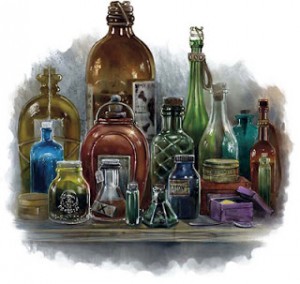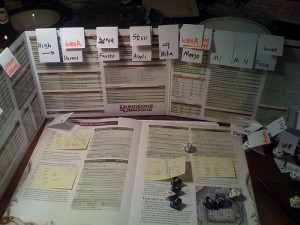On Friday we comb through our extensive archives to find an older article that we feel deserves another look. From June 20, 2011, Dungeon’s Master once again presents: D&D Math – Adding the Numbers.
Player – I rolled a 15, plus 7. Do I hit his AC?
DM – What’s the total?
Player – Um, hold on. 15… (Counts under breath) 16, 17, 18, 19, 20, 21, 22. (At full volume again) 22! Does that hit?
DM – Yes it does. His AC is 14.
I’ve been playing a lot of public-play D&D over the past year; mostly D&D Encounters but also a fair amount of LFR. This is of course in addition to my regular weekly game. Playing in all of these games allows me to see how other people play and lets me learn from the experience. It also highlights problem areas in my game and in the game of the other players and DMs.
One disturbing trend that I’m seeing more and more is players that don’t (or possibly even can’t) do the math. They roll a d20, call out the result and then give me their modifiers and ask if they hit. In many cases the roll is high enough to beat the monster’s defences, so I know they hit even without the modifier added in; however, I always ask for the total before confirming a hit or miss. And it’s not only happening with attack rolls. It’ happens with damage rolls too.

